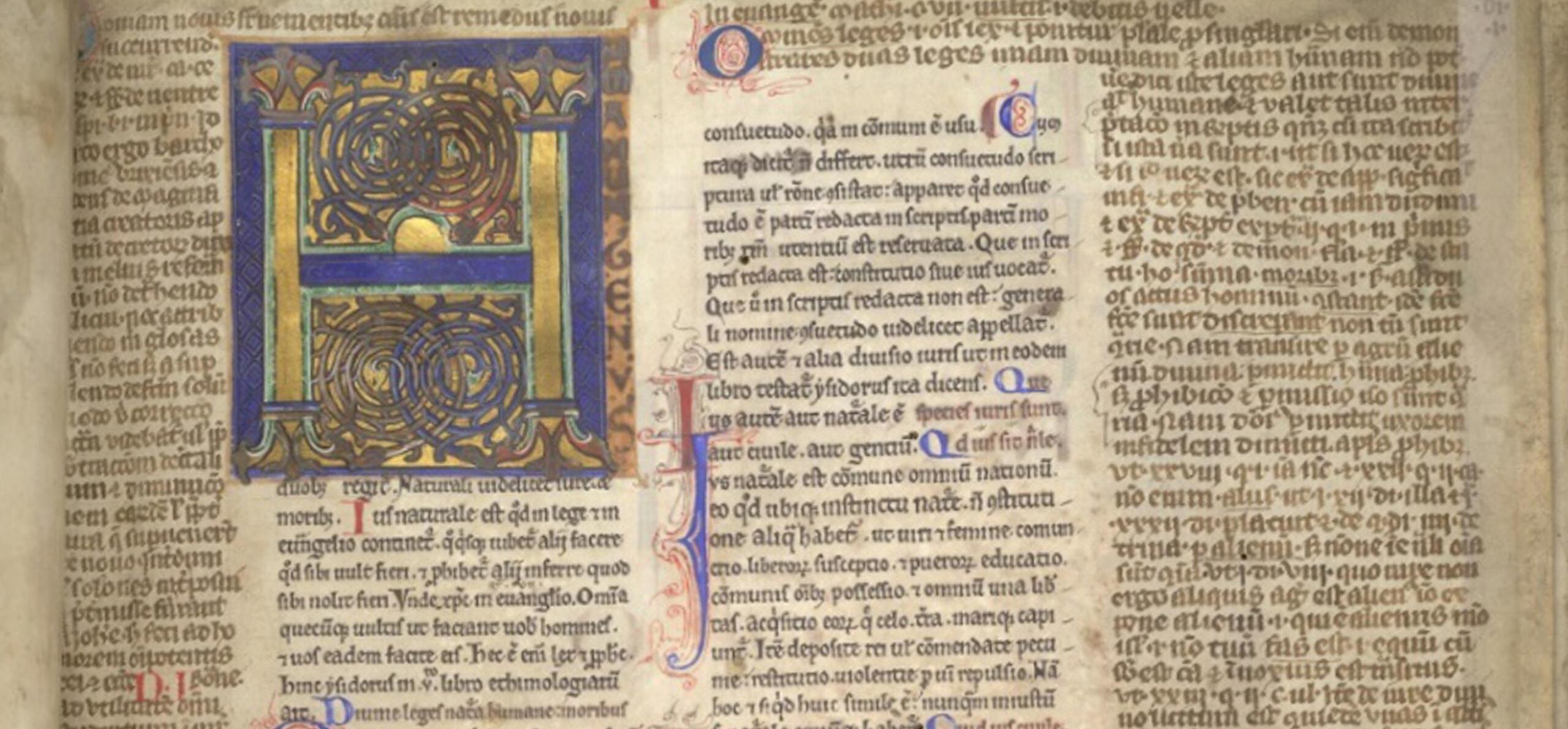Guest blog by Professor Anne Lawrence-Mathers, University of Reading
Professor Anne Lawrence-Mathers gave an informative and engaging talk looking in depth at the surviving manuscripts from Reading Abbey in November 2019. It was so incredibly popular that we thought it was a good idea to ask Anne to write a blog based on the talk she had given!
Below she discusses the creation of the manuscripts and their collection into an impressive library, and shows some examples of the kinds of manuscripts that were used in the abbey church. She also looks at some of the treasures of the Abbey's library and how they were treated by King John and Henry Vlll!
Reading Abbey's Manuscripts
First, many thanks to everyone who came to the ‘Medieval Manuscripts’ talk on Saturday 2 Nov, and who asked so many good questions! This blog, as promised, will give more information on Reading and its surviving manuscripts, with more pictures.
First, don’t forget the special issue of Reading Medieval Studies on Reading manuscripts. It can be downloaded free from the website of the Graduate Centre for Medieval Studies (GCMS).
Reading Abbey
Reading Abbey, having been founded by Henry I in 1121, remained one of the most important religious institutions in England – and even in Northern Europe – for centuries. It is only relatively recently that the library and surviving manuscripts of the abbey have attracted much attention. My talk focused on the twelfth-century manuscripts, arguing that a huge effort went into producing of a high number of impressive biblical and theological books and manuscripts within the abbey’s first decades of existence.
Reading also seems to have had a large collection of legal texts – both of Church law and secular law – and of expert commentaries on them. Those which survive are high-quality manuscripts, like the one below. This was somewhat unusual, but perhaps fitting for a royal abbey where parliaments and councils were held.
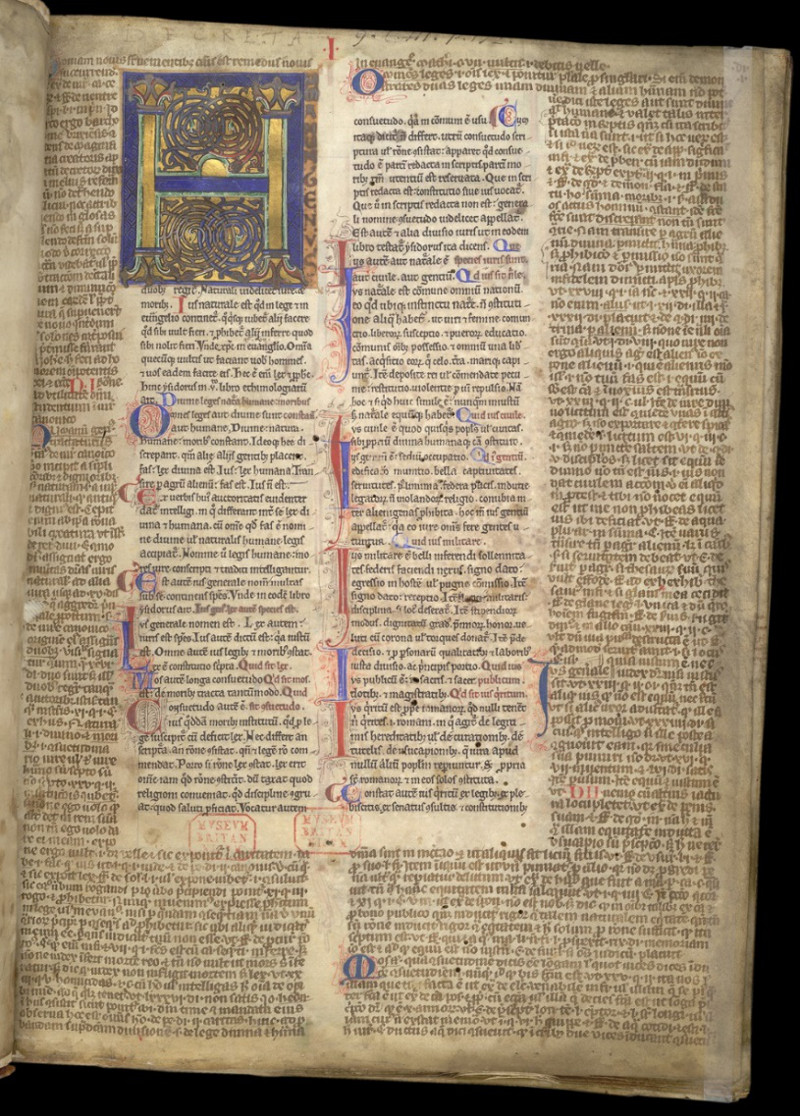
Gratian Decretum (British Library)
Gratian's Decretum
This is the opening of a late twelfth-century copy of the fundamental work on Church law, Gratian’s Decretum. It belonged to Reading before being acquired by the Royal Library, and is now listed as Ms Royal 9 C III in the British Library. It may well have been one of the impressive total of five copies of this work already listed in the Reading Abbey booklist in the 1190s. This copy shows there was ongoing use, since the margins contain written comments dated to the fourteenth-century, long after it was first created.
Study of secular (non-religious) law is shown by another Reading book now in the Royal Collection, as Ms Royal 11 C III. This contains the laws of Justinian, which were central to many secular law codes in the medieval period (although not English law).
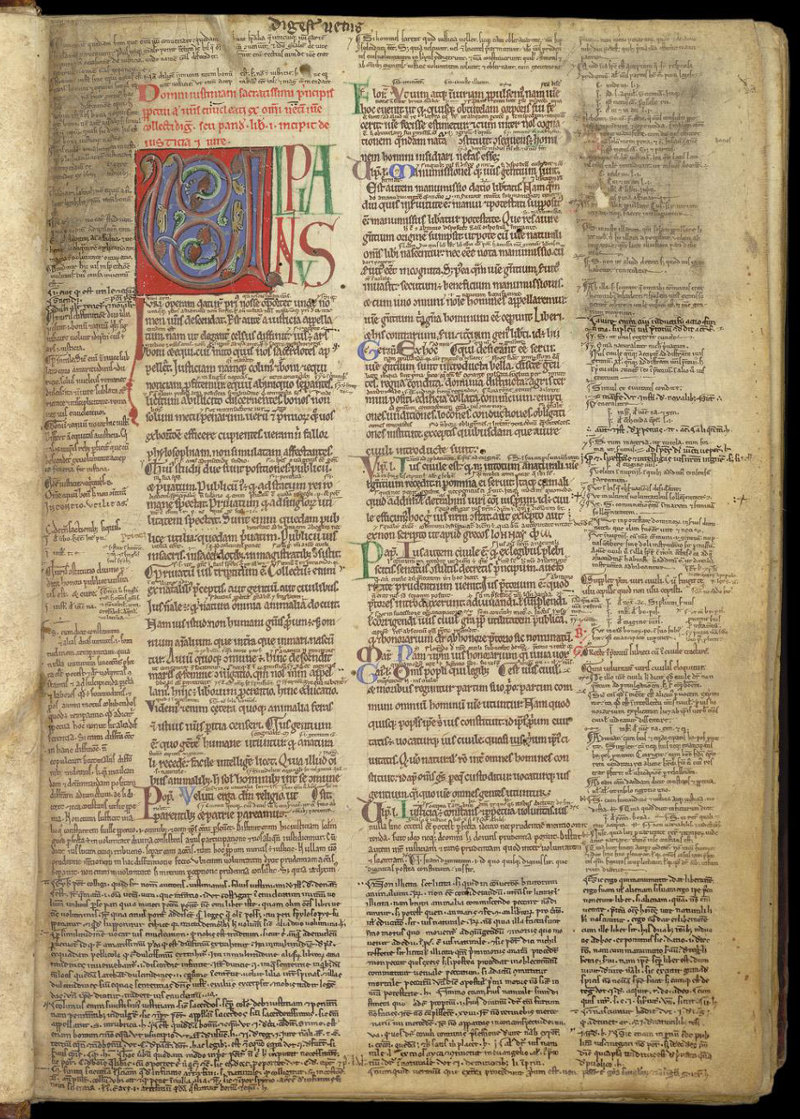
Ms Royal 11 C III
Annotations in the margins
This too was used, studied and valued at Reading, as the notes in the margins show. It also has an inscription on a flyleaf, inside the cover, stating that it was rebound in Oxford at the request of Richard of Reading. This suggests that Richard may have been a monk of Reading who was studying in Oxford. The annals (yearly records) of Reading which were recently published by Brian Kemp (in his Reading Abbey Records: A New Miscellany. Berkshire Record Society, vol. 25. 2018) proudly note that in 1277 a general chapter (meeting) of English Benedictines was held at Reading, and the abbot gained support for the construction of a building in Stockwell Street, Oxford. This was to house scholars from the abbey and other Benedictine groups. It later became Gloucester College and Worcester College (which owns the manuscript containing the annals, now listed as Worcester College, Oxford, MS 213).
King John's esteem
These annals (yearly records) demonstrate the esteem in which King John held the abbey and its great relic of the Hand of St James. John spent nearly a week in the abbey during the crucial month of May 1215, and it was then that ‘the barons of England defied King John at Reading’ as the annals state. Thus, Reading Abbey can claim to have played a part in the build-up to the issuing of Magna Carta. They also provide evidence of the complex relationship between the abbey and King John’s son, Henry III. This king spent considerable amounts of time at the abbey. Yet the only surviving text of the ‘Song of Lewes’, which celebrated the victory of the barons against the king in 1264, is contained in another Reading Abbey manuscript. The Reading annals simply record the rebellion of the barons in 1263 and that they came in arms to Reading in June of that year, before noting both the royal victory at Northampton in April 1264 and the baronial victory at Lewes.
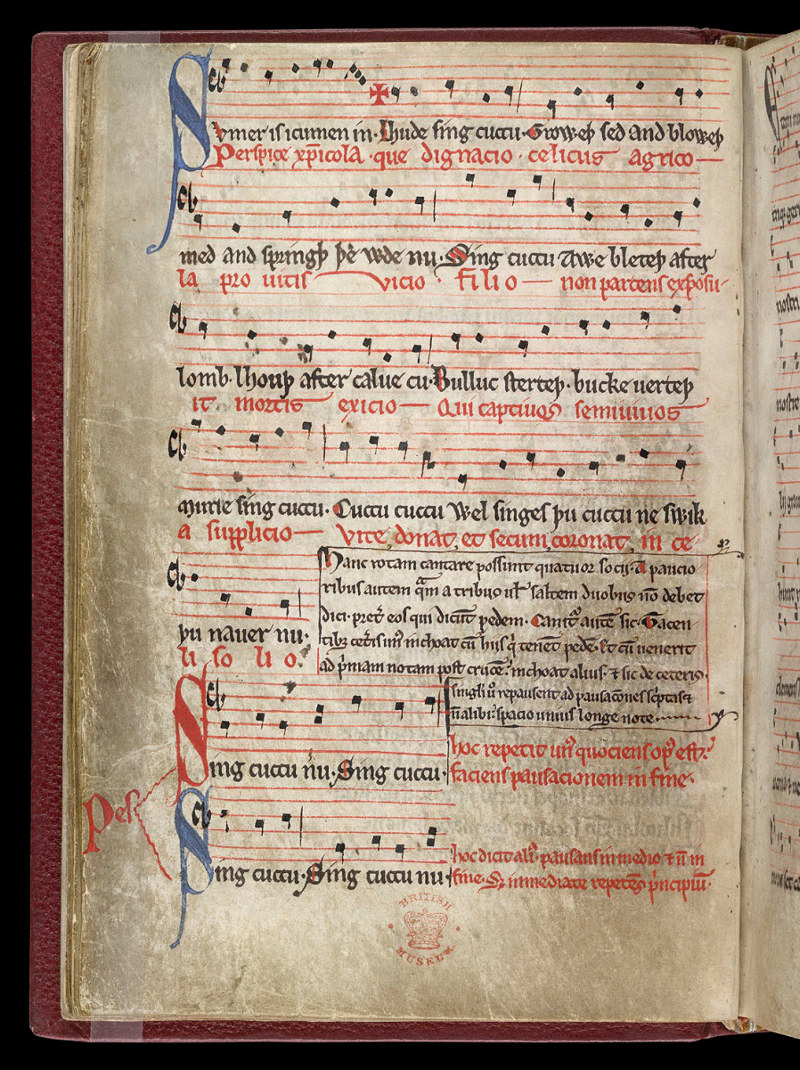
Sumer is Icumen in manuscript (copyright British Library)
Sumer is Icumen in
This takes us to probably the most famous manuscript to have survived from Reading, the one containing the song ‘Sumer Is Icumen In’. The volume is now Ms Harley 978 in the British Library, and is linked to Reading by mentions of Reading abbots and Reading feasts in its calendar. It consists of several parts, probably copied in Oxford and collected together for William of Winchester, a monk of Reading, c1265. It was one of the volumes acquired after the dissolution by Clement Burdett, rector of Englefield, who seems to have played an important role in the preservation and dissemination of the abbey’s manuscripts (as discussed on Saturday).
This is folio 11v, with words and music for Sumer Is Icumen In. The manuscript is also famous for other rather secular contents, such as poems by the satirist, Walter Map, and ‘Breton Lais’ by Marie de France. The rebellious ‘Song of Lewes’ is just before the ‘Lais’ in the collection.
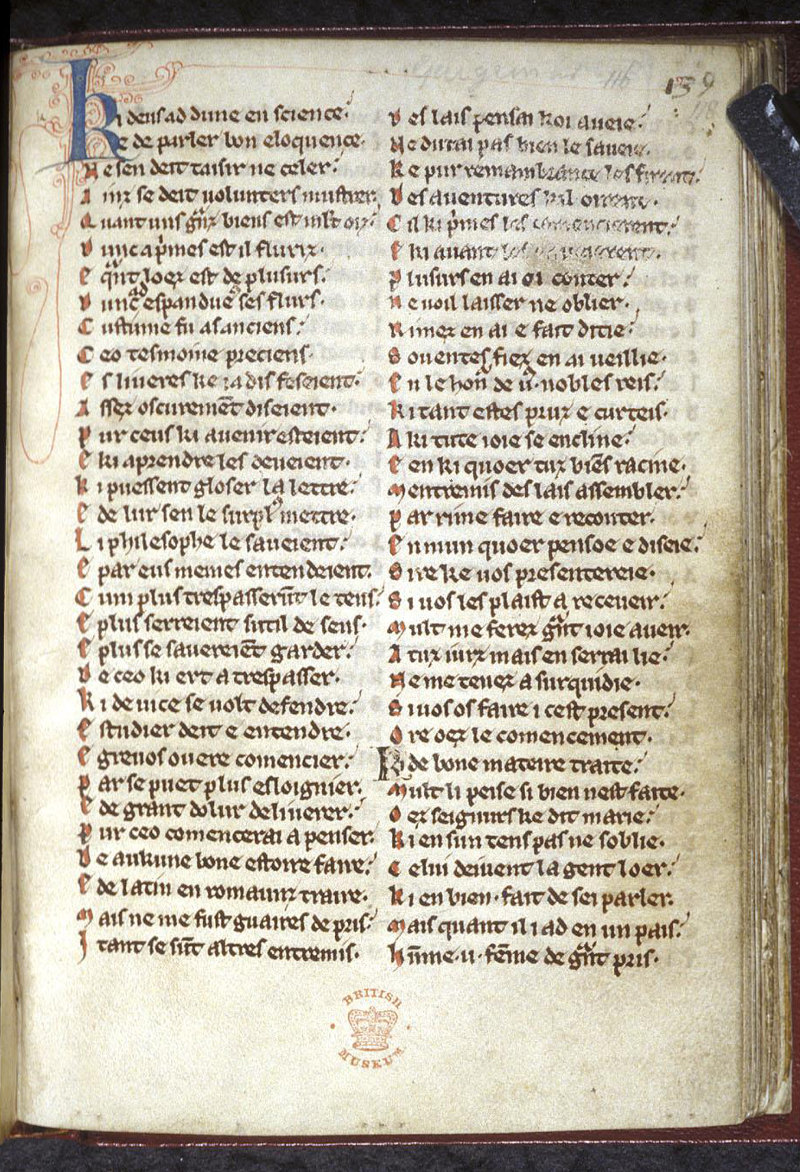
List of Musical Items in Folio 11v (copyright British Library)
Musical list
There is a list of musical items, all now lost, entered on the last two written pages, after the ‘Lais’. These fill four columns of text and are entirely religious and liturgical (the study of public worship). The very first piece was composed by Robert Burgate, who was abbot of Reading 1268-90.
This complex manuscript is difficult to categorise, but can be said to sum up the sophistication and high culture which were available in Reading, side-by-side with the religious devotion which was central to the mainstream life of the abbey. It is a great loss that the abbey’s liturgical manuscripts, which would have given beautiful expression to a key aspect of this religious devotion, have almost entirely disappeared.
Reading Museum's Abbey Manuscript Book
Reading Museum's collection contains a 12th century book from the Abbey library which is on display in the Story of Reading Gallery
You can find out more about it on the Reading Museum Collections Online website
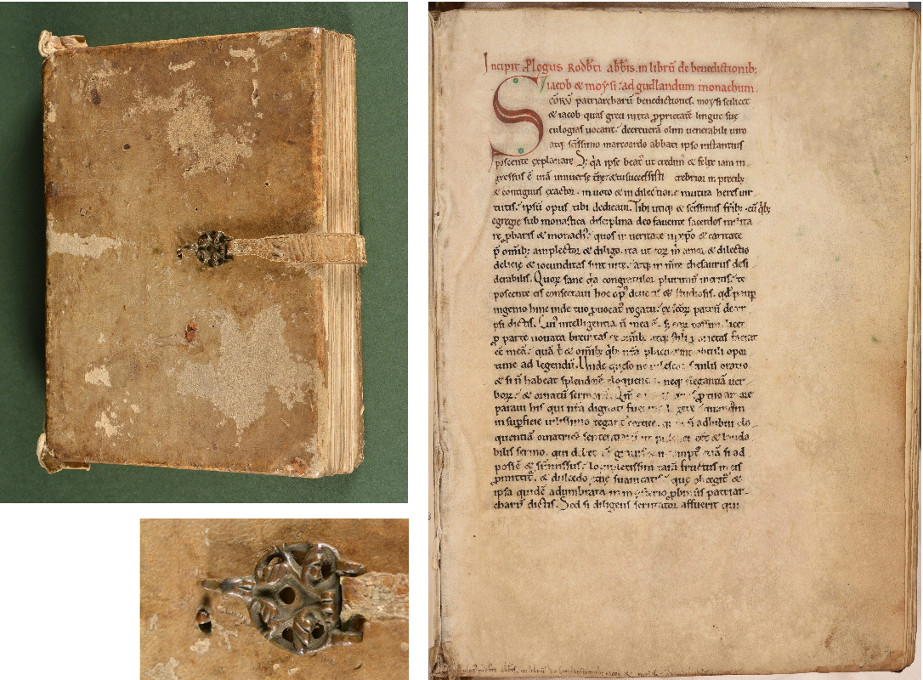
12th century Reading Abbey Manuscript Book (Reading Museum)
